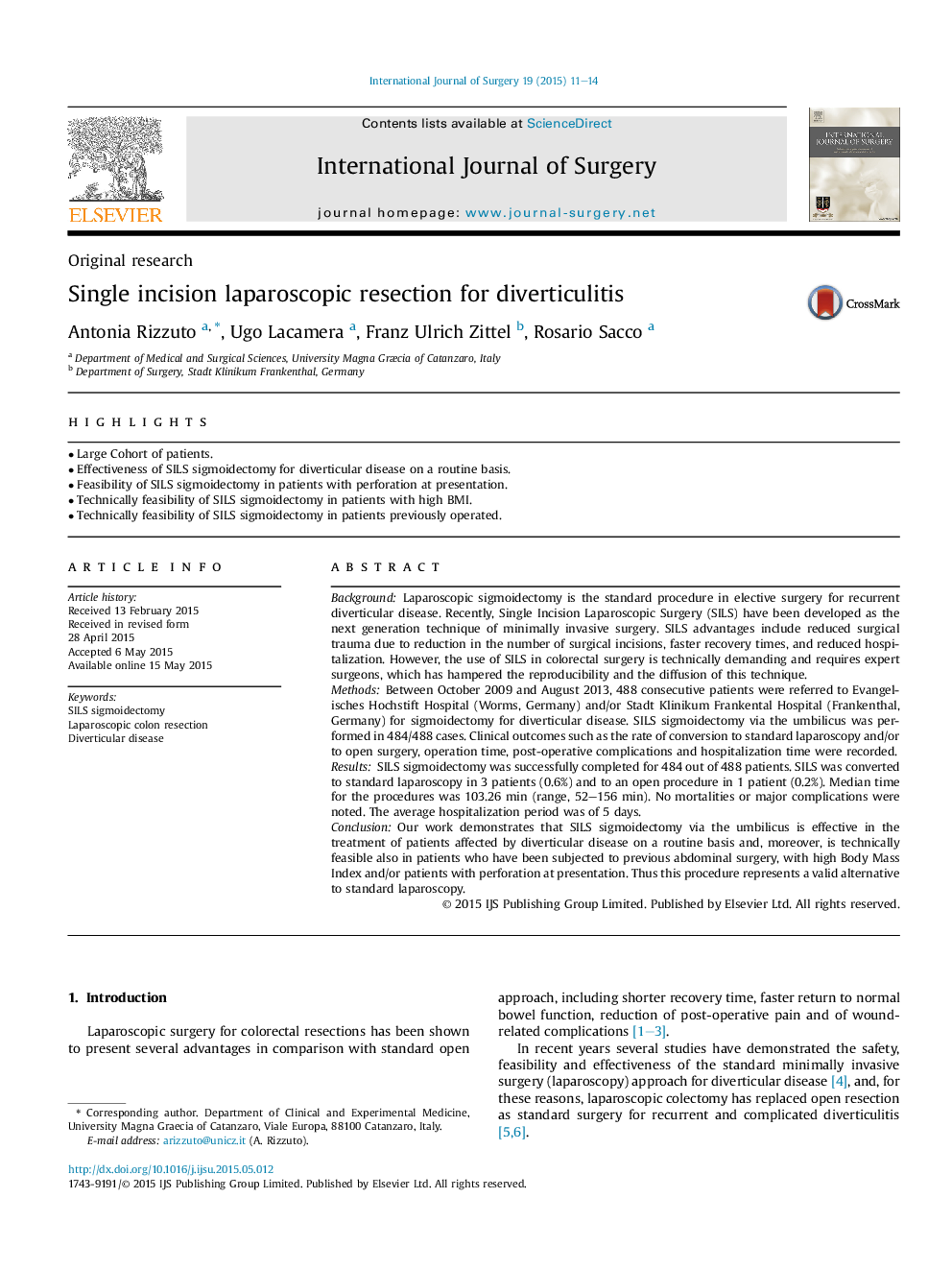| Article ID | Journal | Published Year | Pages | File Type |
|---|---|---|---|---|
| 6251455 | International Journal of Surgery | 2015 | 4 Pages |
â¢Large Cohort of patients.â¢Effectiveness of SILS sigmoidectomy for diverticular disease on a routine basis.â¢Feasibility of SILS sigmoidectomy in patients with perforation at presentation.â¢Technically feasibility of SILS sigmoidectomy in patients with high BMI.â¢Technically feasibility of SILS sigmoidectomy in patients previously operated.
BackgroundLaparoscopic sigmoidectomy is the standard procedure in elective surgery for recurrent diverticular disease. Recently, Single Incision Laparoscopic Surgery (SILS) have been developed as the next generation technique of minimally invasive surgery. SILS advantages include reduced surgical trauma due to reduction in the number of surgical incisions, faster recovery times, and reduced hospitalization. However, the use of SILS in colorectal surgery is technically demanding and requires expert surgeons, which has hampered the reproducibility and the diffusion of this technique.MethodsBetween October 2009 and August 2013, 488 consecutive patients were referred to Evangelisches Hochstift Hospital (Worms, Germany) and/or Stadt Klinikum Frankental Hospital (Frankenthal, Germany) for sigmoidectomy for diverticular disease. SILS sigmoidectomy via the umbilicus was performed in 484/488 cases. Clinical outcomes such as the rate of conversion to standard laparoscopy and/or to open surgery, operation time, post-operative complications and hospitalization time were recorded.ResultsSILS sigmoidectomy was successfully completed for 484 out of 488 patients. SILS was converted to standard laparoscopy in 3 patients (0.6%) and to an open procedure in 1 patient (0.2%). Median time for the procedures was 103.26Â min (range, 52-156Â min). No mortalities or major complications were noted. The average hospitalization period was of 5 days.ConclusionOur work demonstrates that SILS sigmoidectomy via the umbilicus is effective in the treatment of patients affected by diverticular disease on a routine basis and, moreover, is technically feasible also in patients who have been subjected to previous abdominal surgery, with high Body Mass Index and/or patients with perforation at presentation. Thus this procedure represents a valid alternative to standard laparoscopy.
